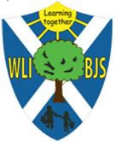Computing Intent Statement
Intent
In line with the 2014 National Curriculum for Computing, our aim is to provide a high-quality computing education which equips children to use computational thinking and creativity to understand and change the world. The curriculum will teach children key knowledge about how computers and computer systems work, and how they are designed and programmed. Learners will have the opportunity to gain an understanding of computational systems of all kinds, whether or not they include computers.
By the time they leave Backwell C of E Junior School, children will have gained substantive and disciplinary knowledge in the three main areas of the computing curriculum: computer science (programming and understanding how digital systems work), information technology (using computer systems to store, retrieve and send information) and digital literacy (evaluating digital content and using technology safely and respectfully). The objectives within each strand support the development of learning across the key stages, ensuring a solid grounding for future learning and beyond.
Implementation
At Backwell C of E Junior School, computing is taught in discreet computing lessons of an hour a week or, when more appropriate, sessions might be grouped together to form a 'computing day' for the term. The computing curriculum is based on 'Teach Computing' scheme of work. Lessons are selected based on the infrastructure we currently have in place at school and to best meet the needs of all our pupils. This scheme has been closely referenced against the 2014 National Curriculum attainment targets in order to ensure progression and coverage. Our teachers plan one unit per term, as well as also ensuring regular slots are set aside to deliver key messages of online safety; these sessions are based on the 'National Online Safety' scheme and are further supplemented by 'Project Evolve' resources.
Having discreet computing lessons means that the children are able to develop depth in their knowledge over the duration of each of their computing topics. Where appropriate, meaningful links will be made between the computing curriculum and the wider curriculum. The children use iPads and laptops to access a range of apps and software, as well other hardware like micro:bits.
In Key Stage 2, we aim to:
1) design, write and debug programs that accomplish specific goals;
2) Use sequence, selection, and repetition in programs;
3)Use logical reasoning to explain how some simple algorithms work
4) Understand computer networks including the Internet;
5) Use search technologies effectively and appreciate how results are selected and ranked
6) Select, use and combine a variety of software (including Internet services) on a range of digital devices
7) Understand the opportunities for communication and collaboration
8) Be discerning in evaluating digital content
9) Use technology safely, respectfully and responsibly
Impact
After the implementation of our computing curriculum, children at Backwell Junior C of E Junior School will be digitally literate and able to join the rest of the world on its digital platform. They will be equipped, not only with the knowledge to use technology effectively and for their own benefit, but more importantly – safely. The biggest impact we want on our children is that they understand the consequences of using the internet and that they are also aware of how to keep themselves safe online.
As children become more confident in their abilities in Computing, they will become more independent and key life skills such as problem-solving, logical thinking and self-evaluation will ideally become second nature.
